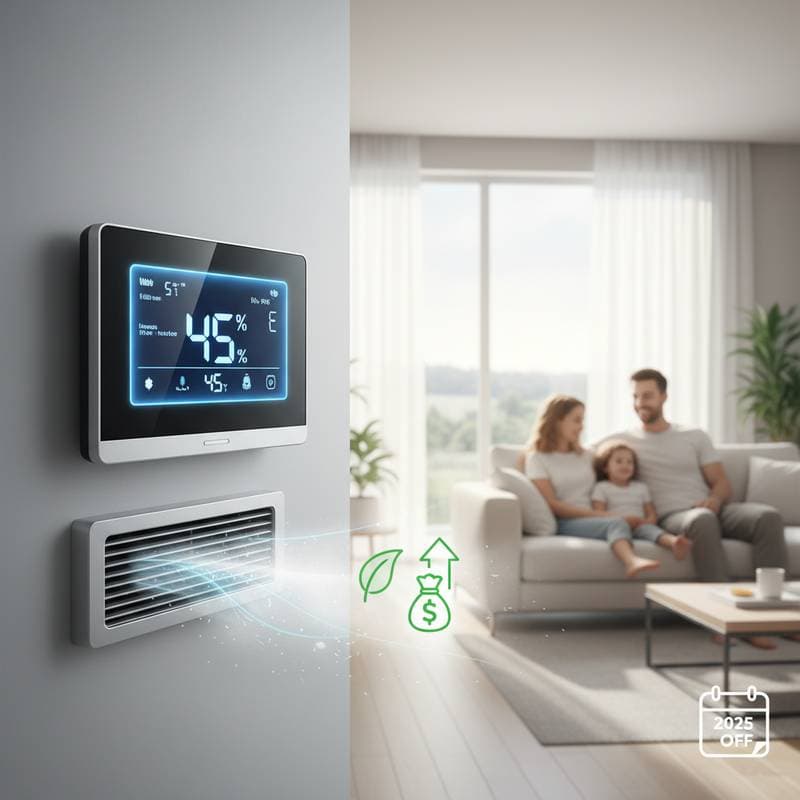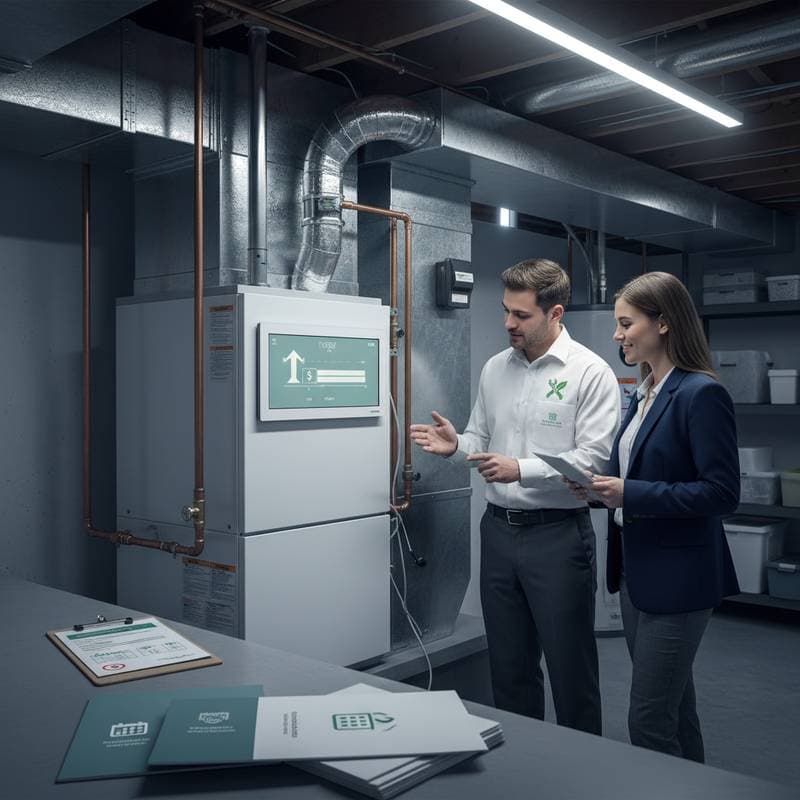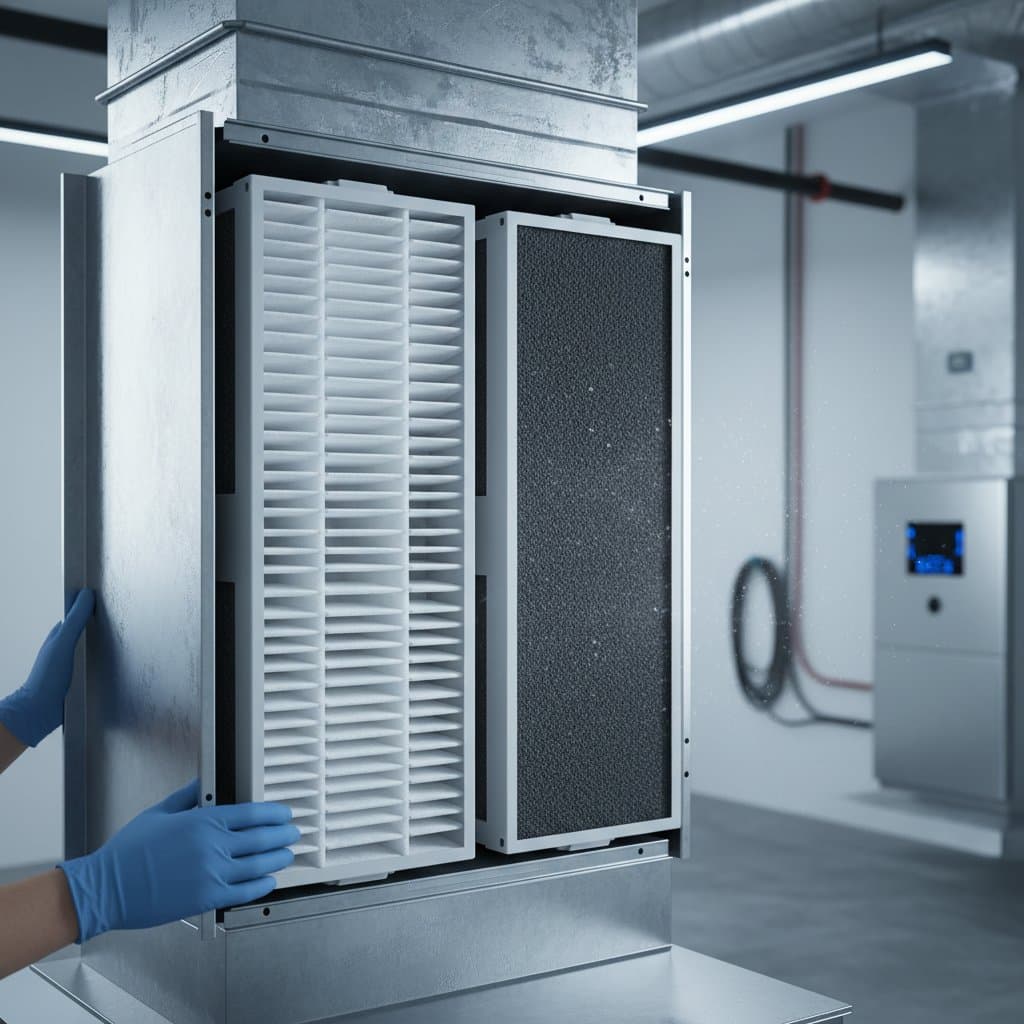Humidity Control: 2025's Secret Energy Efficiency Boost
$700 to $3,500 whole-home humidity control system
$300 to $1,200 portable or single-room dehumidifier
$100 to $500 annual humidity maintenance and calibration
Humidity control emerges as one of the most effective methods to enhance home energy efficiency. The average installation cost for a dedicated humidity control system ranges from $700 to $3,500, based on the system type and home size. Portable dehumidifiers typically cost between $300 and $1,200. Factors such as system capacity, home dimensions, and integration with existing HVAC equipment influence the final price.
Obtain free estimates from local humidity control specialists today to evaluate options suited to your home.
Average Humidity Control Costs
| Service Type | Average Cost |
|---|---|
| Whole-home dehumidifier installation | $1,200 to $3,500 |
| Portable dehumidifier unit | $300 to $1,200 |
| Humidifier installation | $400 to $1,200 |
| Integrated HVAC humidity control | $1,500 to $3,800 |
| Maintenance and calibration | $100 to $500 per year |
| Metric | Amount |
|---|---|
| National average cost | $2,000 |
| Minimum cost | $300 |
| Maximum cost | $3,800 |
| Average cost range | $700 to $3,500 |
Cost data derives from research and project costs reported by members.
Why Humidity Control Matters for Energy Efficiency
Excessive indoor humidity makes air feel warmer than the actual temperature. This condition forces air conditioners to operate longer, thereby elevating energy expenses. Conversely, low humidity causes air to feel cooler, which increases heating demands. Maintaining relative humidity between 40 and 60 percent fosters comfort while minimizing energy consumption.
Balanced humidity allows the HVAC system to function less frequently, extend its service life, and deliver consistent comfort. Contemporary humidity control systems also mitigate mold growth, wood warping, and static electricity, all of which impact home health and resident well-being.
Detailed Cost Breakdowns
By System Type
| System Type | Average Cost | Description |
|---|---|---|
| Whole-home dehumidifier | $1,200 to $3,500 | Installed within ductwork, suitable for humid climates |
| Portable dehumidifier | $300 to $1,200 | Standalone unit for single rooms or basements |
| Whole-home humidifier | $400 to $1,200 | Adds moisture during dry seasons |
| Smart humidity controller | $200 to $600 | Monitors and adjusts humidity automatically |
By Home Size
| Home Size | Recommended System | Estimated Cost |
|---|---|---|
| Under 1,500 sq. ft. | Portable or small ducted unit | $300 to $1,500 |
| 1,500 to 2,500 sq. ft. | Mid-range whole-home system | $1,200 to $2,800 |
| Over 2,500 sq. ft. | High-capacity integrated system | $2,800 to $3,800 |
Labor vs. Equipment Costs
| Category | Cost Range | Notes |
|---|---|---|
| Equipment | $400 to $2,800 | Depends on capacity and brand |
| Labor | $300 to $1,000 | Includes wiring, duct integration, and calibration |
| Total Installed Cost | $700 to $3,500 | Average homeowner investment |
Key Factors Affecting Humidity Control Costs
-
Home size – Larger homes demand higher-capacity systems, which raise both equipment and labor expenses. For instance, a whole-home system for a 3,000-square-foot property may exceed $3,000.
-
System type – Portable units offer lower initial costs but provide reduced efficiency in expansive areas. Integrated systems involve higher upfront investments yet yield superior long-term savings.
-
HVAC compatibility – Older HVAC setups may require modifications, such as enhanced ductwork or advanced thermostats, to accommodate humidity control.
-
Efficiency level – Units with superior energy efficiency command premium prices but can decrease monthly bills by up to 20 percent. Prioritize ENERGY STAR certified models for optimal returns.
-
Installation complexity – Properties with restricted duct access or antiquated wiring necessitate additional labor, potentially adding several hundred dollars to the total.
-
Brand and warranty – Reputable brands like Aprilaire, Honeywell, or Trane feature elevated costs but ensure dependable operation and extended warranties.
-
Local climate – Regions with elevated humidity levels often require robust systems to achieve indoor equilibrium.
-
Seasonal demand – Off-peak periods see reduced prices as HVAC contractors experience lower workloads.
Related Humidity Management Costs
Homeowners frequently face supplementary expenses alongside the primary system acquisition.
| Related Service | Average Cost | Description |
|---|---|---|
| HVAC inspection | $100 to $200 | Ensures system compatibility |
| Duct cleaning | $300 to $700 | Improves airflow and humidity control accuracy |
| Mold remediation | $500 to $3,000 | Necessary if moisture issues already exist |
| Thermostat upgrade | $150 to $400 | Allows for humidity sensing and automation |
| Old unit removal | $50 to $150 | Disposal of outdated dehumidifiers |
Maintenance and Care Tips
Regular maintenance sustains the efficiency of humidity control systems and prolongs their durability.
- Clean filters monthly to avoid airflow obstructions.
- Verify humidity sensors every few months for precision.
- Examine condensate drains to prevent leaks or blockages.
- Arrange annual professional tune-ups for calibration and inspections.
- Maintain humidity levels between 40 and 60 percent to optimize comfort and energy savings.
- Integrate smart thermostats with humidity control for automated adjustments.
Routine maintenance tasks can reduce operating costs by up to 10 percent each year.
Repair or Replace: Making the Right Choice
Dehumidifiers or humidifiers that fail to sustain desired levels or generate unusual noise may warrant replacement.
- Opt for repair if the expense falls below half the cost of a new unit.
- Choose replacement for inefficient or warranty-expired systems.
- Consider upgrades when persistent dampness, musty smells, or inconsistent room comfort arise.
Installing a high-efficiency model in place of an obsolete unit can diminish overall HVAC energy consumption by up to 15 percent.
Strategies to Save on Humidity Control
Reduce expenses while preserving performance through these practical approaches:
- Schedule installations during transitional seasons when contractors extend discounts.
- Apply for rebates and incentives available for ENERGY STAR certified systems.
- Combine services like duct cleaning or AC servicing with the installation.
- Solicit multiple quotes to assess rates and warranty terms.
- Employ programmable thermostats to manage humidity precisely.
- Seal gaps around windows and doors to lessen the system's burden.
- Utilize smart sensors to monitor and refine humidity settings.
- Perform DIY tasks such as filter cleaning and drain inspections.
These measures can yield hundreds in savings over the system's lifespan and enhance year-round comfort.
Frequently Asked Questions
How Much Does a Whole-Home Dehumidifier Cost?
A whole-home dehumidifier typically costs $1,200 to $3,500 when installed. Capacity, brand, and installation demands determine the exact price.
Is Humidity Control Worth the Investment?
Humidity control merits investment by reducing heating and cooling expenses, inhibiting mold, and extending HVAC longevity. Energy bill reductions frequently recoup installation costs within several years.
Can Humidity Control Integrate with Existing HVAC Systems?
Most contemporary HVAC systems support humidity controls via add-on modules or thermostats. A contractor can assess compatibility and suggest appropriate configurations.
What Indoor Humidity Level Should Be Maintained?
Aim for 40 to 60 percent relative humidity. This range promotes comfort, energy efficiency, and air quality while averting mold and structural damage to wood.
How Often Should Dehumidifiers or Humidifiers Receive Maintenance?
Inspect filters monthly and engage professional service annually. Consistent care guarantees precise humidity monitoring and reliable operation.
Do Portable Dehumidifiers Perform as Effectively as Whole-Home Systems?
Portable units suit small areas or short-term applications, whereas whole-home systems ensure uniform humidity distribution and greater long-term energy savings.
Can Humidity Control Alleviate Allergies?
Balanced humidity curbs dust mites, mold spores, and allergens. It enhances air quality and comfort for individuals with sensitivities.
What Is the Lifespan of a Humidity Control System?
Systems endure 8 to 15 years under proper maintenance. Durability varies with usage, climate, and cleaning frequency.
How Can One Determine If a Home Requires Humidity Control?
Indicators include musty odors, window condensation, peeling paint, or static buildup. Disparities in room comfort also signal the need.
Are Smart Humidity Controls Valuable?
Smart systems adapt humidity based on environmental and occupancy factors. Though initially costlier, they typically decrease utility expenses and elevate comfort.
Hiring a Humidity Control Contractor
Select certified HVAC professionals experienced in moisture management. These steps guide the process:
- Verify licensing and insurance for regulatory adherence.
- Evaluate expertise with whole-home humidity installations.
- Request references from prior clients.
- Demand itemized quotes delineating labor and equipment.
- Compare at least three estimates prior to selection.
- Examine warranty provisions for parts and labor.
- Clarify installation timelines and testing procedures.
- Confirm post-installation maintenance offerings.
A competent contractor will detail system sizing, control features, and upkeep routines.
Essential Questions for Your Contractor
- What system capacity suits my home's size and layout?
- How does this integrate with my current HVAC setup?
- What efficiency ratings and ENERGY STAR status apply?
- What warranty terms cover parts and labor?
- How will installation affect my daily routine?
- What maintenance schedule do you recommend?
- Can you provide examples of similar projects?
- Are rebates or financing options available?
Realizing Energy Savings Through Humidity Control
Implementing humidity control transforms home comfort and efficiency. By addressing moisture levels precisely, homeowners achieve lower bills, healthier environments, and durable HVAC performance. Start with a professional assessment to tailor a solution that delivers lasting benefits.



